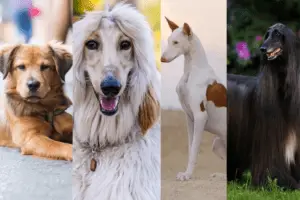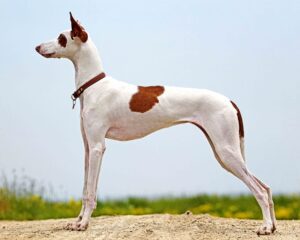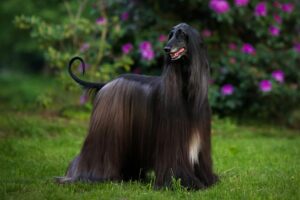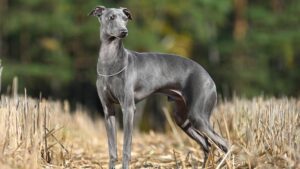Are you dreaming of a furry companion that thrives under the sun? These five dog breeds are tailor-made for warm weather. Say goodbye to winter blues and hello to endless sunny days with these heat-loving pups by your side.
From the energetic Dalmatian to the elegant Basenji, these breeds bring a burst of sunshine into your life. Embrace the contrast between frosty winters and balmy summers as you welcome one of these warm-weather champions into your home.

Key Takeaways
-
Choose Wisely: When selecting a dog breed for warm climates, consider breeds like the Chihuahua, Dalmatian, or Italian Greyhound known for their heat tolerance.
-
Hydration is Key: Ensure your dog has access to fresh water at all times, especially in hot weather, to prevent dehydration and heat-related issues.
-
Sun Protection: Protect your furry friend from the sun by providing shade, limiting exposure during peak hours, and using pet-safe sunscreen on areas with less fur.
-
Regular Exercise: Engage in exercise routines during cooler parts of the day to prevent overheating, keeping playtime fun and safe for your warm climate breed.
-
Grooming Matters: Regular grooming not only keeps your dog looking neat but also helps in temperature regulation by removing excess fur that can trap heat.
-
Vet Visits: Schedule regular vet check-ups to monitor your dog’s health, address any concerns early, and ensure they are thriving in their warm climate environment.
Understanding Warm Climate Breeds
Key Traits
Certain dog breeds are well-suited for warm climates due to specific characteristics like short coats and tolerance to heat. These breeds thrive in hot weather by possessing traits that aid in temperature regulation. For example, breeds like the Chihuahua and Dalmatian excel in warm climates due to their compact size and efficient cooling mechanisms.
When it comes to coat types, dogs with short-haired or single-coated fur fare better in warm regions compared to those with dense double coats. The absence of an insulating undercoat allows for better heat dissipation, keeping these breeds comfortable in high temperatures. In contrast, no-haired breeds like the American Hairless Terrier naturally adapt to warm climates without the need for extensive grooming.
Exercise Needs
Exercise is vital for dogs in warm climates to prevent overheating and maintain overall health. Breeds suited for warm weather require regular physical activity but must avoid strenuous exercise during peak heat hours. Engaging in activities like swimming or early morning walks helps these dogs stay active while avoiding heat-related issues.
Care Requirements
In caring for dog breeds thriving in warm climates, grooming plays a crucial role in managing their coat health and preventing heat-related ailments. Regular brushing helps remove loose fur and prevents matting, especially for short-haired breeds. Adequate hydration is essential, along with providing shady spots and access to cool water sources for comfort and well-being.
Top 5 Breeds for Warm Climates


Chihuahua Overview
Chihuahuas, known for their tiny size and big personality, are perfectly suited for warm climates. Standing at 5-8 inches and weighing 2-6 pounds, these dogs have short or long coats. With a life expectancy of 12-20 years, Chihuahuas originated in Mexico and excel in hot weather due to their adaptability and compact size.


Australian Cattle Dog Overview
Australian Cattle Dogs thrive in warm temperatures with their sturdy build and endurance. Classified under the herding group, they possess a medium-sized frame with a dense double coat. Originating from Australia, these dogs are intelligent, active, and excel in hot climates due to their working background and resilience.


Ibizan Hound Overview
The Ibizan Hound’s sleek physique and elegant appearance make them well-suited for warm climates. Belonging to the hound group, they have a lean body, long legs, and unique upright ears. Originating from Spain’s Balearic Islands, these dogs’ agility and short coat enable them to handle heat efficiently.


Afghan Hound Overview
Afghan Hounds boast a regal presence and grace that aligns with warm climates. With a height of 25-27 inches and weight around 50-60 pounds, they have a silky flowing coat. Originating from Afghanistan, these dogs’ history as desert hunters equips them with adaptations for thriving in hot environments.
Greyhound Overview


Greyhounds are well-suited for warm weather environments due to their slender build and short coat. Standing at 27-30 inches tall and weighing 60-70 pounds, these dogs belong to the sighthound group. Their speed, athleticism, and minimal grooming needs make them ideal companions in hot climates.
Why These Breeds Thrive in Heat
Physical Attributes
Certain dog breeds suited for warm climates have specific physical attributes that help them thrive in hot weather. Their size, coat type, and body structure play a crucial role in adapting to high temperatures. For instance, breeds like the Dalmatian and Chihuahua have short coats that prevent overheating.
In contrast, breeds like the Basenji have a unique coat texture that acts as insulation against heat. Their medium size allows for efficient heat dissipation, making them well-suited for warmer regions. Comparatively, larger breeds such as the Great Dane may struggle due to their size and heavier coat.
Adaptations to Warmth
Dog breeds have evolved specific adaptations to cope with warm climates over time. Physiological changes, such as increased sweat gland density, aid in cooling the body efficiently. Behavioral adjustments, like seeking shade or resting during peak heat hours, also contribute to temperature regulation.
Certain breeds, like the Mexican Hairless Dog, have developed a higher tolerance for heat through evolutionary advantages. Their ability to withstand high temperatures stems from generations of living in warm environments. This adaptation gives them an edge in thriving under intense heat conditions.
Activity Levels
When it comes to activity levels, dog breeds suited for warm climates vary in their energy requirements. Breeds like the Australian Cattle Dog and Rhodesian Ridgeback are known for their high energy levels and need for regular exercise. On the other hand, breeds like the Cavalier King Charles Spaniel may require less physical activity but still benefit from mental stimulation.
To keep dogs healthy and happy in warm regions, it is essential to balance their exercise needs with the climate’s demands. Providing adequate opportunities for play and mental engagement can ensure that these breeds lead fulfilling lives even in hot weather conditions.
Special Care Tips
Hydration Needs
Dogs adapted to warm climates require ample hydration to prevent heat-related issues. Adequate water intake is crucial, especially in hot weather. Ensure access to fresh water at all times and consider adding ice cubes to encourage drinking.
To support hydration, incorporate water-rich foods into their diet. Monitor their water consumption closely, particularly during outdoor activities. Offering a shallow pool for them to cool off can also help maintain hydration levels.
Shade and Shelter
Providing adequate shade and shelter is vital for dogs in warm climates. Create cool, shaded areas where they can rest comfortably away from the sun’s intense heat. Consider using canopies or trees to create natural shade spots in your yard.
For additional protection, provide shelters like dog houses with proper ventilation to help regulate temperature. Avoid leaving dogs exposed to direct sunlight for prolonged periods to prevent heat exhaustion.
Managing Exercise
Incorporate exercise routines that consider the temperature when dealing with warm climate-adapted breeds. Opt for early mornings or evenings when temperatures are cooler for outdoor activities. Adjust exercise intensity and duration based on the weather conditions.
Be mindful of signs of heat stress during exercise; panting excessively, drooling, or weakness may indicate overheating. Allow plenty of breaks and offer water regularly during physical activities to ensure your dog stays hydrated and healthy.
Alternatives and Considerations
Other Suitable Breeds
In warm climates, Greyhounds are excellent choices due to their short coat and low body fat. These dogs are built for speed, making them well-suited for warmer temperatures. Labrador Retrievers also thrive in heat; their water-resistant coat helps regulate body temperature. Dalmatians with their short coat and high endurance are another breed that can handle warm weather well.
-
Greyhounds: Built for speed with a short coat.
-
Labrador Retrievers: Water-resistant coat aids in regulating body temperature.
-
Dalmatians: Short Coat and high endurance make them suitable for warm regions.
Breeds to Avoid
Certain breeds like Huskies may not fare well in warm climates due to their thick double coats designed for cold weather. Similarly, Saint Bernards, known for their thick fur, struggle in hot temperatures. These breeds can face challenges such as overheating and heatstroke in warmer regions.
-
Huskies: Thick double coat unsuitable for warm climates.
-
Saint Bernards: Thick fur leads to difficulties in hot weather.
Final Remarks
You’ve now explored the top five dog breeds perfectly suited for warm climates. Understanding why these breeds thrive in the heat and learning about the special care tips for them can help you provide the best environment for your furry friend. Consider these factors when choosing a dog breed to ensure they stay healthy and happy in a warm climate.
Make sure to tailor your care routines to suit the specific needs of your chosen breed, offering them a comfortable and safe living space. By following these guidelines, you can create a loving environment where your dog can flourish. Remember, informed decisions lead to happier pets!






